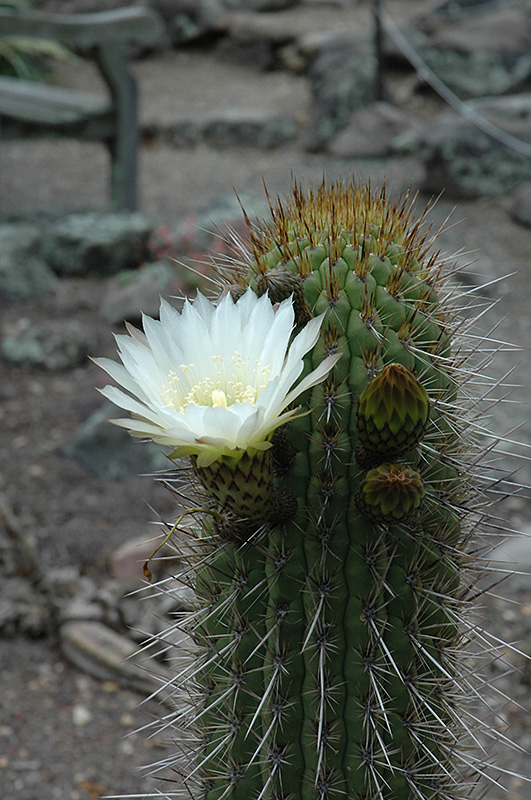Chilean Cactus
Description
This cactus variety forms towering stands up to twenty feet tall, and over time will create an impressive clump; very slow growing; white flowers are nocturnal; excellent for xeriscaping, and water conservation gardens
Landscape Attributes
Chilean Cactus is a large succulent evergreen plant with a strongly upright, cylindrical form. It tends to grow as a solitary entity comprised of a single stem, and it doesn't usually spread laterally. As a type of cactus, it has no true foliage; the body of the plant is wholly comprised of a spiny grayish green stem which is prominently ribbed.
Chilean Cactus is recommended for the following landscape applications;
Planting & Growing
Chilean Cactus will grow to be about 20 feet tall at maturity, with a spread of 3 feet. It is often grown as either a solitary specimen or in combination with other complementary plants as part of a garden composition. It grows at a slow rate, and under ideal conditions can be expected to live to a ripe old age of 100 years or more; think of this as a heritage perennial for future generations!
This plant should only be grown in full sunlight. It prefers dry to average moisture levels with very well-drained soil, and will often die in standing water. It is considered to be drought-tolerant, and thus makes an ideal choice for a low-water garden or xeriscape application. Like most succulents and cacti, this plant prefers to grow in poor soils and should therefore never be fertilized. It is not particular as to soil type or pH. It is somewhat tolerant of urban pollution. This species is not originally from North America. It can be propagated by division.
Chilean Cactus is a fine choice for the garden, but it is also a good selection for planting in outdoor pots and containers. Because of its height, it is often used as a 'thriller' in the 'spiller-thriller-filler' container combination; plant it near the center of the pot, surrounded by smaller plants and those that spill over the edges. It is even sizeable enough that it can be grown alone in a suitable container. Note that when growing plants in outdoor containers and baskets, they may require more frequent waterings than they would in the yard or garden. Be aware that in our climate, this plant may be too tender to survive the winter if left outdoors in a container. Contact our experts for more information on how to protect it over the winter months.

